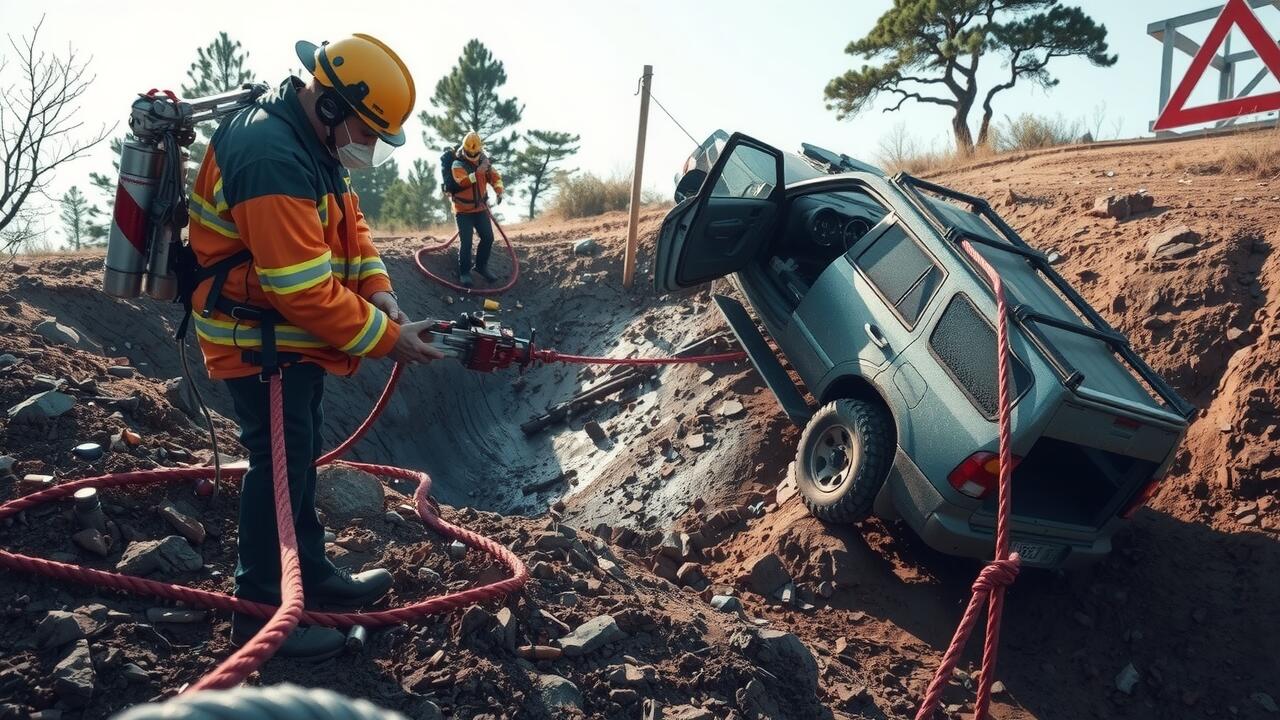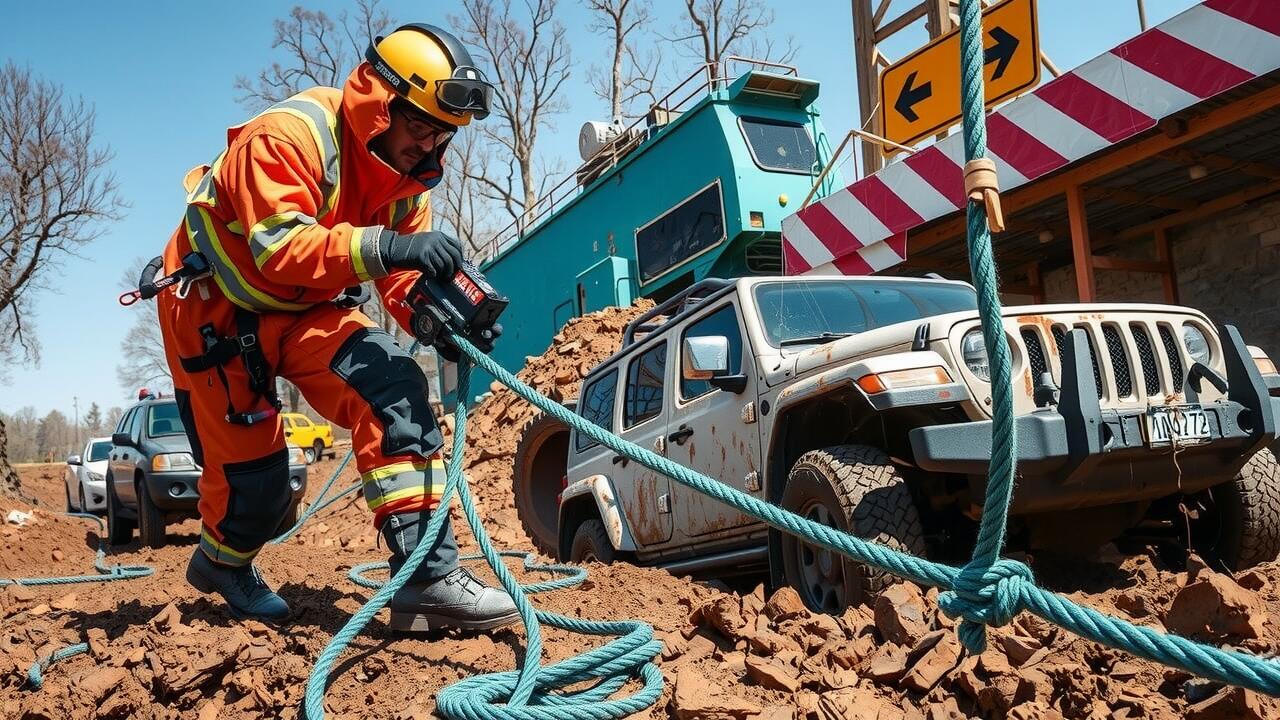
Techniques for Effective Load Management
Effective load management is crucial during winching and extrication to ensure the safety of both personnel and equipment. Properly assessing the weight of the load helps in selecting the right winching system and rigging techniques. Utilizing tools such as load cells can provide accurate weight measurements, aiding in the decision-making process. Additionally, distributing the load evenly across the winching system can significantly reduce the risk of equipment failure. Ensuring that all anchors and attachment points are secure is essential, as any instability can lead to accidents during operation.
Training team members on load management techniques is equally important. Each individual must understand the implications of their role in the winching and extrication process. Regular drills and practical exercises can enhance familiarity with the equipment and improve overall efficiency. Utilizing a systematic approach to load management, including checks for potential obstacles and hazards, will further streamline operations. By maintaining a clear focus on the principles of effective load management, teams can work confidently and increase the success rate of their extrication efforts.
Best Practices for Weight Distribution
Proper weight distribution is crucial in winching and extrication operations to ensure safety and efficiency. When positioning the load, ensure that the weight is balanced evenly, as uneven weight distribution can lead to instability and potential accidents. Assess the entire scenario, including terrain and environmental factors, which may influence how the load is held during the process. Implementing techniques such as using additional rigging points can help stabilize the load and prevent tipping or shifting during extraction.
Team members should always verify that the winching equipment is rated for the load being pulled. In scenarios where the weight exceeds the equipment's capacity, the risk of equipment failure increases significantly. Utilize proper rigging practices and test equipment before deploying it in critical situations. Regular training and drills on weight distribution can enhance team readiness and response during winching and extrication efforts. Increased familiarity with these practices can foster a safer environment for all involved.
Communicating During Winching Operations
Effective communication during winching operations significantly enhances safety and precision. Teams involved in winching and extrication must establish clear lines of communication to ensure every member understands their role and responsibilities. Utilizing hand signals alongside verbal commands can help minimize confusion, particularly in high-noise environments where shouting may not be practical. Regular training sessions on these communication methods can further solidify understanding and readiness during actual incidents.
Active communication also extends to monitoring the winching process itself. Team leaders should call out critical updates, such as when the load is being lifted or when adjustments to the rigging are required. This level of awareness keeps everyone informed and prepared for any sudden changes or complications. Incorporating a buddy system, where partners check in with one another throughout the winching and extrication procedure, can create a more cohesive approach, fostering a safer environment for all personnel involved.
Signals and Commands for Team Coordination
Clear communication is vital during winching and extrication operations. Using standardized signals and commands ensures that all team members are aware of their responsibilities and can respond quickly to any changes. A common set of hand signals can facilitate effective coordination, especially in noisy environments where verbal communication may be hindered. Additionally, assigning specific roles to team members helps streamline operations, allowing for a more efficient response to evolving situations.
Establishing a communication protocol prior to commencing winching and extrication tasks is essential for safety and effectiveness. Teams should conduct briefings to discuss the meaning of each signal and command. Regular training sessions can help reinforce these protocols, ensuring that each member understands the importance of their role and how to respond to signals promptly. Consistency in communication can prevent misunderstandings and reduce the risk of accidents during critical operations.
Troubleshooting Common Winching Issues
When faced with winching challenges in extrication scenarios, it is essential to conduct a thorough assessment of the equipment and the situation. Common issues often stem from mechanical failures or improper setup. Before initiating any winching operation, ensure that the winch, cable, and anchors are in proper working order. Check for frayed cables, malfunctioning motors, or any obstructions that could impede progress. Understanding the specific challenges presented by the load and environment can significantly influence the outcome.
Another frequent trouble in winching and extrication is the lack of effective communication among team members. Miscommunication can lead to unsafe practices or exacerbate the existing problem. It is crucial to establish clear signals and commands for all team members involved in the operation. Regular training on these signals can prevent misunderstandings during high-pressure situations. Clear communication not only fosters teamwork but also enhances safety and efficiency in addressing winching-related issues.
Identifying and Resolving Challenges
When faced with challenges during winching and extrication operations, thorough assessment of the situation is crucial. Factors such as terrain, equipment limitations, and load characteristics can significantly impact the effectiveness of the operation. Identifying the root cause of any issues that arise will allow the team to adapt their approach. For instance, if the winch is struggling due to excessive load or improper positioning, recognizing these elements quickly can prevent further complications.
Resolving challenges requires clear communication and a strategic approach. Teams should establish a troubleshooting protocol that includes steps to follow when encountering common problems. Regular training on winching and extrication techniques will help ensure that all team members are prepared to tackle unforeseen challenges effectively. Maintaining a positive attitude and remaining focused on safety will contribute to more successful outcomes, even in less-than-ideal circumstances.
FAQS
What are the key techniques for effective load management during winching?
Key techniques for effective load management during winching include assessing the weight of the load, utilizing proper rigging methods, and ensuring even weight distribution to prevent instability.
How can I ensure proper weight distribution when winching?
To ensure proper weight distribution, position the load evenly, use appropriate rigging equipment, and regularly check the balance of the load during the operation to avoid tipping or shifting.
What are the best communication practices during winching operations?
Best communication practices during winching operations involve using clear and concise signals, establishing a command structure, and ensuring all team members are aware of their roles and responsibilities.
What signals and commands should be used for team coordination during winching?
Standard hand signals, verbal commands, and communication devices should be used for team coordination. Hand signals should be visible to all team members, and verbal commands should be loud and clear, particularly in noisy environments.
What are common problems encountered during winching and how can they be resolved?
Common problems encountered during winching include equipment failure, rope tangling, and load shifting. These can be resolved by performing regular equipment inspections, keeping the winching area clear of obstructions, and training team members on troubleshooting techniques.
